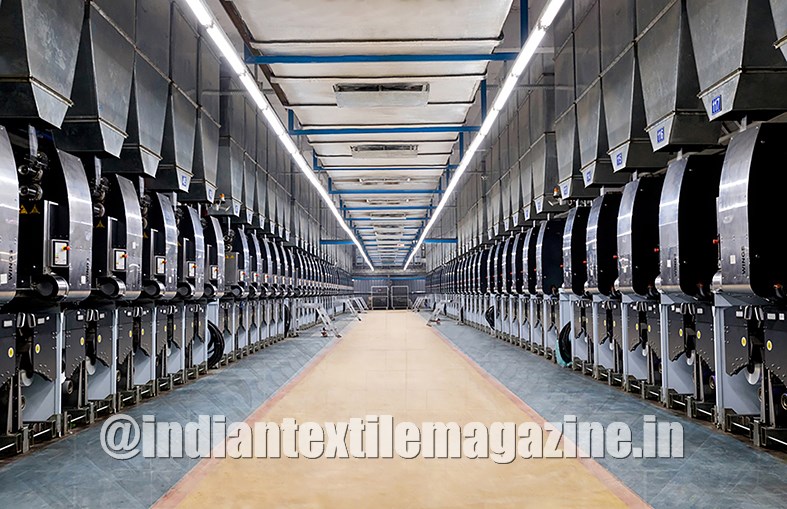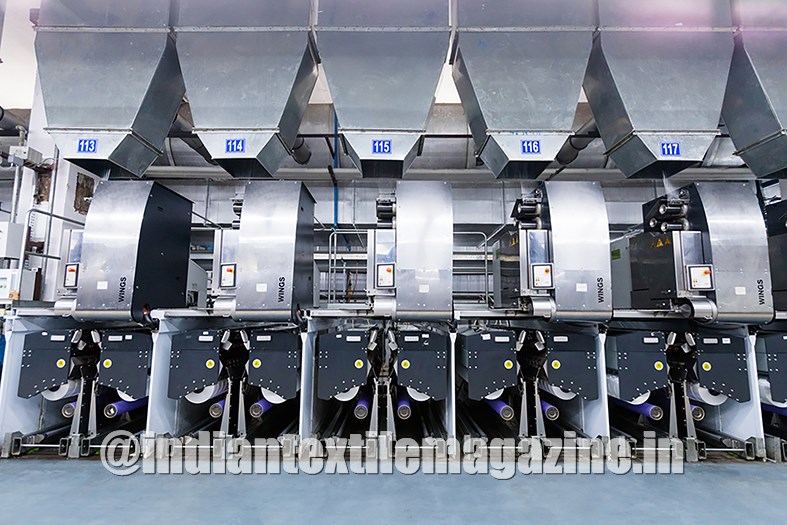Investing in global technology, expands product range
Filatex India has taken rapid strides ever since a humble beginning and is now a game-changer when it comes to innovative products and the adoption of new technologies. In this interview with Ganesh Kalidas, the company’s Chairman and Managing Director Madhu Sudhan Bhageria recounts the journey of the company and the way ahead

Among the many industrial sectors that play an important role in the development of mankind as well as every nation’s economy, the textile industry takes a prime position. And wielding the baton among the many leading companies across the world is Filatex India, which is engaged in the business of manufacturing synthetic filament yarns with a wide range of products. The company has had an interesting journey with its promoters having made a successful transition from trading of different varieties of synthetic yarns to manufacturing. After two decades of trading activities of yarns, Filatex India was incorporated on August 8, 1990 to enter the sphere of manufacturing. This bold move was also on account of their association with big players in the market like JK Synthetics.
A humble beginning was made by setting up a small plant at Noida, Uttar Pradesh, to manufacture mono filament yarns. The product was successfully rolled out in 1994. However, a capacity of 500 TPA was not enough to whet the appetite. To address the needs of the market, Filatex India took another big step towards growth and set up a larger capacity plant at Dadra which started commercial production of multi-filament yarns in 1996 with an initial capacity of 6,000 tonnes per annum (TPA) of POY and 3,500 TPA of DTY. The establishment escalated its production capacity from 6,000 TPA to 50,000 TPA in just a little over a decade, producing a wide range of products like POY, DTY, and FDY in polyester to polypropylene crimp yarns.
A wide portfolio
The Dadra plant expansions were gradual and aimed at customer’s needs. At this plant, Filatex India produces an almost full range of products, not only in black and white but in all possible colours. Continuing the quest for growth and having exhausted land resource at Dadra, the next leap was to move to a new and large parcel of land. The new plant located at Dahej, Gujarat, is a CP unit of 600 TPD capacity where the chips-to-yarn technology was abandoned and the manufacturing technology of melt-to-yarn directly from petrochemicals was adopted. The upcoming years in the Dahej unit saw three upgrades in terms of production capacity and product diversity with an even richer upgrade line-up for the future. All the expansions under Filatex India have been running on full capacity since their inaugural produce and the company plans on maintaining this legacy.
The Dahej plant gave Filatex India a strong foothold in the polyester yarns market. “The challenges were plenty as this was a greenfield project and the team had to master larger logistics and continuous polymerization process. Once the process technology was absorbed, the product basket was expanded to add FDY and DTY using state-of-art latest technology from Germany,” says CMD Madhu Sudhan Bhageria. “We have made rapid strides in exporting drawn textured yarn (DTY). At present, our export contribution is 18% to our overall revenues. Our present focus is on the polyester sector. Polyester has established its supremacy over other man-made fibers. In our assessment, the shift from cotton to polyester is gaining rapid momentum and the present ratio of 60% of cotton and 40% polyester in textiles will change, like it has happened globally wherein the share of polyester in textiles as a fiber is around 60%. The growth of polyester remains intertwined to the GDP of the country, which is on a high trajectory,” Bhageria says.
Filatex India is now in the process of adding bright polyester at its Dahej plant with latest spinning and winding technology. In terms of future expansion plans, Filatex India has been nursing the idea of establishing its own captive power plant by the end of the next fiscal year. The plant is commissioned to be one-of-its-kind bearing 30 megawatts of conventional power and 1.4 megawatts of solar power. In addition to the impeccable production management at Filatex India, the company is also proactive by way of new product launches and innovations.
The yarn supplied by them now features in apparel of all kinds, including home textiles and denims. Elaborating about new trends in the textile market, Bagheria says that there is a bright future for man-made filaments. “Fibre yarn only comprises 25% of the market whereas filament yarn is 75% owing to its effectiveness in cost, labour and energy. Polyester filament yarn has particularly stronger odds in its favour and it may only be superseded by recycled yarn in the future. The future is in recycling and that is where even Filatex India aims to be,” he says.
Ahead of the curve
The company, in spite of intense competition, has managed to maintain an edge over its competitors due to consistent product quality and low operating cost. It takes pride in its energy-efficient operations. Also, over the years, the company has grown from ‘hands on’ management to a professionally managed business run by well-qualified and experienced professionals. Its staff strength is now of 2,000 people on its rolls and about 1,600 people on contractual terms. The company views its ‘human asset’ as a critical factor for success and values it as something precious as the technology it uses. On the strength of its systems the company has been accredited with ISO 9001:2008, BS OHSAS 18001:2007 and ISO 14001:2004. The products meet the stringent requirements of OKEOTEX, which adds to global acceptance.
Despite already being on top of their game, Filatex India is tirelessly aiming at both organic and inorganic growth. Stepping into the fabric and garment market to add value change is seen as an immediate objective. The company wants to manufacture the highest quality of fabric that has so far only been imported owing to lack of available technology in India. The second priority on the list is to empirically incorporate itself into the garment sector, mainly into the manufacturing of polyester garments owing to various benefits like breathability and dryness.
The company is also on a constant brainstorming spree to overcome hurdles in the domestic textile industry. One such attempt has been to offer customisation. And with no minimal quantity barriers, noticeably reduced cost of machines and ink, and increased speed and efficiency of the machines, digital printing is the future. Several sizes of the machines are now available in the market, with various sub-parts pertaining to different uses. “Technology advancement in the digital realm is what excites us now,” Bagheria says.
Overcoming challenges
For a few months following demonetization, there was a reduction in the demand of fabric. It took a toll on the business operations of the entire sector as the cash flow in the fabric segment was compromised. The levy of GST was initially a hiccup too as fabric did not have the burden of VAT or excise duty. However, frequent amendments in government policies finally served as a saviour for the industry.
Elaborating about sustainability, Bagheria says: “Growth would be the new terminology. There are a lot of growth opportunities in the textile industry with decent margins. China’s earlier status of being a giant in this industry is now getting diluted. The labour and power costs have hiked up and there are no subsidies on the products. In terms of pricing and production, Filatex India is as competent in this industry as China is. The only drawback is lack of technological upgradation. This challenge is being litigated since the last 2-3 years. China will always remain dominant in the industry but will henceforth create space for Filatex India and other Indian textile companies to create better margins for growth.”

